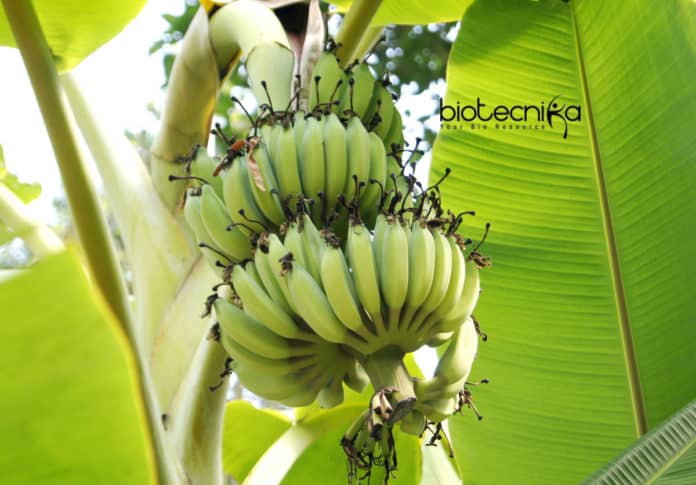CRISPR For Banana’s Fungus- The Last Resort To Save The Fruit
Scientists are using a mix of approaches to save the banana from the deadly fungus- Fusarium wilt tropical race 4 (TR4).
A team in Australia has inserted a gene from wild bananas into the top commercial variety known as the Cavendish. They are currently testing these modified bananas in field trials.
Breeding TR4 resistance into the Cavendish using conventional methods isn’t possible because the variety is sterile and propagated by cloning.
Randy Ploetz, a plant pathologist at the University of Florida, said the only way to save the Cavendish is through CRISPR Gene Editing. The variety accounts for 99% of global banana shipments.
James Dale, a biotechnologist at the Queensland University of Technology, started getting inquiries about his genetically modified (GM) bananas in July, as the first rumors surfaced that TR4 ha
d reached Colombia. In panic Columbia had declared a national emergency.CRISPR For Banana’s Fungus- CRISPR The Only Alternative?
This isn’t the first time that a commercial banana variety has faced extinction.
In the first half of the 1900s, another strain of the Fusarium fungus called TR1 nearly wiped out the era’s top banana, the Gros Michel. But farmers had a backup- the Cavendish, which was resistant to TR1. By the 1960s, big banana growers such as Chiquita were switching to the Cavendish.
There’s no natural alternative this time.
Rodomiro Ortiz, a plant geneticist at the Swedish University of Agricultural Sciences, says that none of the naturally occurring banana species has the qualities that have made the Cavendish so popular and the ability to resist TR4.
The fungus Fusarium wilt tropical race 4 (TR4) cannot be killed with fungicides, and it can linger in the soil for up to 30 years. The strain began destroying banana crops in the 1990s in Asia before invading Australia and countries in the Middle East and Africa.
Now the deadly fungus is in the Americas and scientists say that the Cavendish could become virtually extinct in the next several decades unless they can modify it to resist the fungus through the CRISPR technique.
Dale’s team has focused on altering Cavendish plants by inserting a gene from the wild banana Musa acuminate malaccensis that confers resistance to TR4. Dale and his colleagues have planted transgenic Cavendish on half a hectare of land infested with TR4 in northern Australia. According to Dale, the transgenic plants are not yet infected with the fungus while about a third of the regular bananas that he planted for comparison are infected with the fungus.
He plans to apply to Australian regulators for approval to market a transgenic Cavendish banana after the study ends in 2021. Even if Dale’s transgenic banana wins approval, selling them could be a problem. GM crops have long faced public pushback around the world, especially in Europe.
CRISPR For Banana’s Fungus- How is the CRISPR Technique used?
In an attempt to make biotech bananas more palatable to regulators, Dale is also editing the Cavendish’s genome with CRISPR to boost its resilience to TR4, in contrast of inserting foreign genes.
Dave is trying to turn on a dormant gene in the Cavendish that confers resistance to TR4.
Other researchers are using CRISPR to boost the Cavendish’s defenses in different ways.
Leena Tripathi, a molecular biologist at the International Institute of Tropical Agriculture in Nairobi, Kenya, is using the CRISPR to suppress Cavendish genes that seem to render the plant vulnerable to TR4.
Tropic Biosciences a Biotech Startup in Norwich, UK, is trying to use CRISPR to boost the Cavendish’s immune system. The biotech company is using CRISPR to edit RNA strands in the Cavendish so that they silence genes in TR4.
Though it remains unclear how regulators around the world will react to gene-edited bananas, in 2016, the US Department of Agriculture decided not to regulate a mushroom whose genome was edited using CRISPR. Researchers are afraid that they might similarly treat CRISPR edited bananas.
Experts suggest that seeing CRISPR as the only hope to save bananas would eventually lead to a futile effort. There are more than a thousand other types of bananas aside from the Cavendish with different taste and qualities.






























